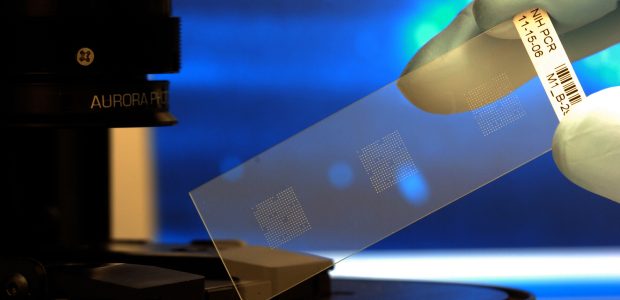
The medical and technological sectors are witnessing remarkable changes, with one of the leading market players being the biochip industry. In 2022, the global biochip market was appraised at an astonishing USD 12.9 billion. What’s driving this massive market value? The rising demand for personalized medicine globally. And it doesn’t stop here. Experts forecast that from 2023 to 2031, the market will grow at an impressive CAGR of 11.84%, potentially hitting the USD 35.4 billion mark by 2031. Let’s delve into the nuances of this intriguing market.
Overview
At the heart of the biochip market is the biochip itself – a compact device designed for thousands of simultaneous biochemical reactions. Envision having an entire laboratory on the palm of your hand. That’s the marvel of biochips! From medical diagnosis to DNA sequencing, biochips pave the way for efficient and faster biotechnological applications.
At the heart of the biochip market is the biochip itself – a compact device designed for thousands of simultaneous biochemical reactions. Envision having an entire laboratory on the palm of your hand. That’s the marvel of biochips! From medical diagnosis to DNA sequencing, biochips pave the way for efficient and faster biotechnological applications.
Components of a Biochip
- The strength and efficiency of biochips lie in their complex yet elegant design, which involves several components:
- Substrate: This forms the base, usually made of glass, plastic, or other materials, upon which biological molecules are attached.
- Microfluidic Channels: Tiny channels that deftly guide the flow of biological samples and reagents.
- Probes: Specific bio-reagents secured to the substrate, crafted to bind with distinct target molecules.
- Detectors: Typically using laser scanners, these systems read and interpret data from the biochip’s molecular interactions.
Market Segmentation
The biochip market is multifaceted, segmented across various categories:
- By Type: This includes DNA chips, lab-on-a-chip, protein chips, among others.
- By Application: The applications span disease diagnostics, drug discovery, genomics, proteomics, and even agricultural fields.
- By End-users: The primary consumers are hospitals, biotech firms, pharmaceutical companies, academic institutes, and diagnostic centers.
- Region-wise: Regions like North America, Europe, and Asia-Pacific have distinct market segments.
Benefits and Biochip Applications
Biochips are not just about diagnostics; they offer myriad benefits:
- Swift Disease Diagnostics: They enable timely detection and treatment of diseases.
- Streamlined Drug Discovery: They provide insights into drug-to-gene interactions, making drug discovery efficient.
- Personalized Medicine: Treatment becomes more patient-centric, considering individual genetic profiles.
- Agricultural Advancements: From monitoring crop health to boosting yields, biochips play a role.
Driving Factors
Several dynamics propel the biochip market forward:
Technological Breakthroughs: Advancements are continuously refining chip designs, increasing their efficiency while reducing production costs.
R&D Investment Surge: There’s an influx of investments in research and development from public and private sectors.
Chronic Disease Rise: The increasing prevalence necessitates better diagnostic tools.
Challenges and Barriers
Every industry faces hurdles, and the biochip market is no exception:
High Initial Costs: The technology demands substantial investment, which can be daunting.
Complexity: The intricate designs sometimes make production and interpretation challenging.
Regulation Strictures: Regulatory standards might slow down innovation and market penetration.
Market Opportunities and Outlook
Peering into the future, the horizon is filled with opportunities:
- Emerging Markets: Regions like Asia-Pacific and Africa are untapped gold mines due to evolving healthcare systems and technology adoption rates.
- AI Integration: Merging biochips with Artificial Intelligence could usher in unprecedented diagnostic precision.
- Diverse Applications: Beyond healthcare, applications in environmental monitoring and bioterrorism surveillance beckon.
Key Trends in the Biochip Market
- Personalized Healthcare: As medicine becomes increasingly tailored to individual genetic profiles, biochips are at the forefront of this transformation.
- Integration with IoT: Biochips are now being integrated with the Internet of Things (IoT) for real-time data collection and analysis.
- Portable Diagnostics: The move towards home-based healthcare solutions sees biochips playing a pivotal role in portable diagnostic tools.
- Biochip Market Scenario
- With the convergence of biotech and tech sectors, the biochip market is poised at an exciting juncture. As demand surges, production technologies are evolving to be more scalable and cost-effective. Concurrently, collaborations across sectors are strengthening the market position, ensuring that biochips are not just a passing trend but a mainstay in the future of diagnostics and personalized healthcare.
- In wrapping up, the biochip market, with its present stature and future prospects, embodies the synergy of science and technology. It’s a testament to how innovation can reshape industries, providing solutions that were once deemed the stuff of science fiction. The next decade for biochips looks promising, filled with advancements and growth.
